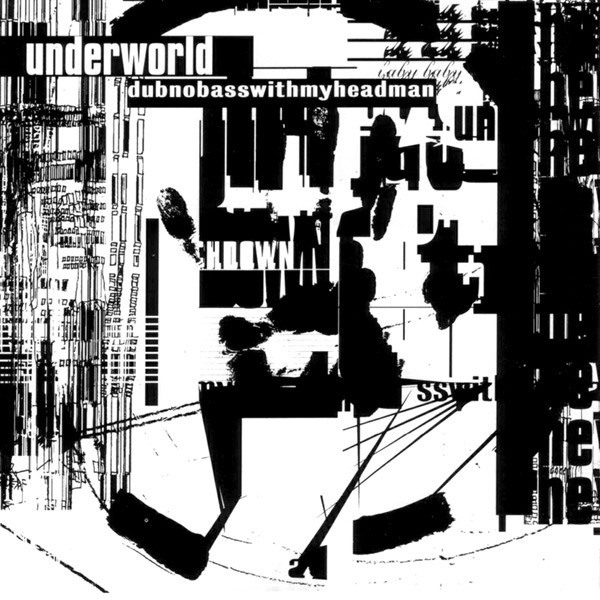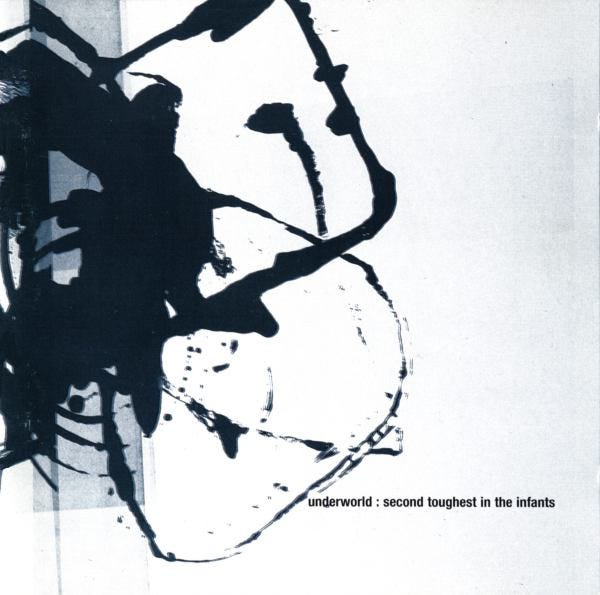I bought this CD in Ottawa, Canada, when it came out. It was far-out music for me, and I was only beginning to explore music that challenged my conception of what music was about. The art on Underworld’s dubnobasswithmyheadman knocked me out (done by an artist going by the moniker “Tomato”). The mystery of who Pearl’s girl was, and why the cover photo of a red car door was chosen, added to the mystique of having new music that went beyond the bounds of music I’d heard before.
The Discogs.com entry is great (https://www.discogs.com/release/10634-Underworld-Pearls-Girl). I can’t find the EP on Qobuz or TIDAL streaming services, nor on YouTube. Here is the title track on YouTube: "Pearl's Girl (radio edit, official video)". But that’s just the radio edit, which is this, the album version (from 1996’s Second Toughest in the Infants), cut in half: "Pearl's Girl (album version)". After an extended percussion and synth intro, during which layer upon layer of synths and percussion are added and retained, a beat-poetry rap begins. Karl Hyde’s vocals are a monotone ratatat of loose connections, and the Underworld-signature electronic manipulation and looping of vocal snippets plays with a single word and the ways it can be pronounced, resonating between /CRAY-zee/ and /cray-ZEE/. This is an echo of the earlier album dubnobasswithmyheadman’s “Cowgirl.”
The beat-poetry rap reminds me of Billy Joel’s “We Didn’t Start the Fire,” which, when it came out, was my favorite song. I leave it to the listener to interpret the poem as they will. Underworld’s vocals are typically visually evocative (such as on “Juanita/Kiteless/To Dream of Love,” on the same album as “Pearl’s Girl”—Second Toughest in the Infants). The “Pearl’s Girl” rap is different in that it is more cognitive/conceptual than phenomenological.
The EP has a couple of remixes of the title track, one without vocals (“Pearl’s Girl (Tin There)”) and one with alternative vocals (“Pearl’s Girl (14996 version)”). Unlike many singles, the EP has a varied track listing, with songs that are distinctly each one’s own. There isn’t remix overload.
I have not been following Underworld for the last several years, and I’m only barely aware of just a fraction of the work they’ve been doing. I like that they have not succumbed to what seems to be a temptation of electronic groups who make danceable music, like Skrillex and Daft Punk. The temptation seems to be to iron out all the idiosyncrasies of what made them breakthrough acts in the first place, and just crank out uninspiring music (as I see it). Little that Daft Punk have done since Homework stands up to those first tracks. I’m not familiar with much of Skrillex’s oeuvre, but I understand he has changed his style quite a bit, making more generic dance music based on samples instead of original instrumentation. Underworld have kept experimenting while staying in their unique groove. I can’t speak to all of their music, and some of it may fall into the category of music I’ve just criticized Daft Punk and Skrillex for.
If you are at all open to electronic dance music (EDM) and its many sub-genres, I recommend tracking down album versions of Underworld tracks from the 90s and 2000s, such as "Cups," from 1999’s Beaucoup Fish.







